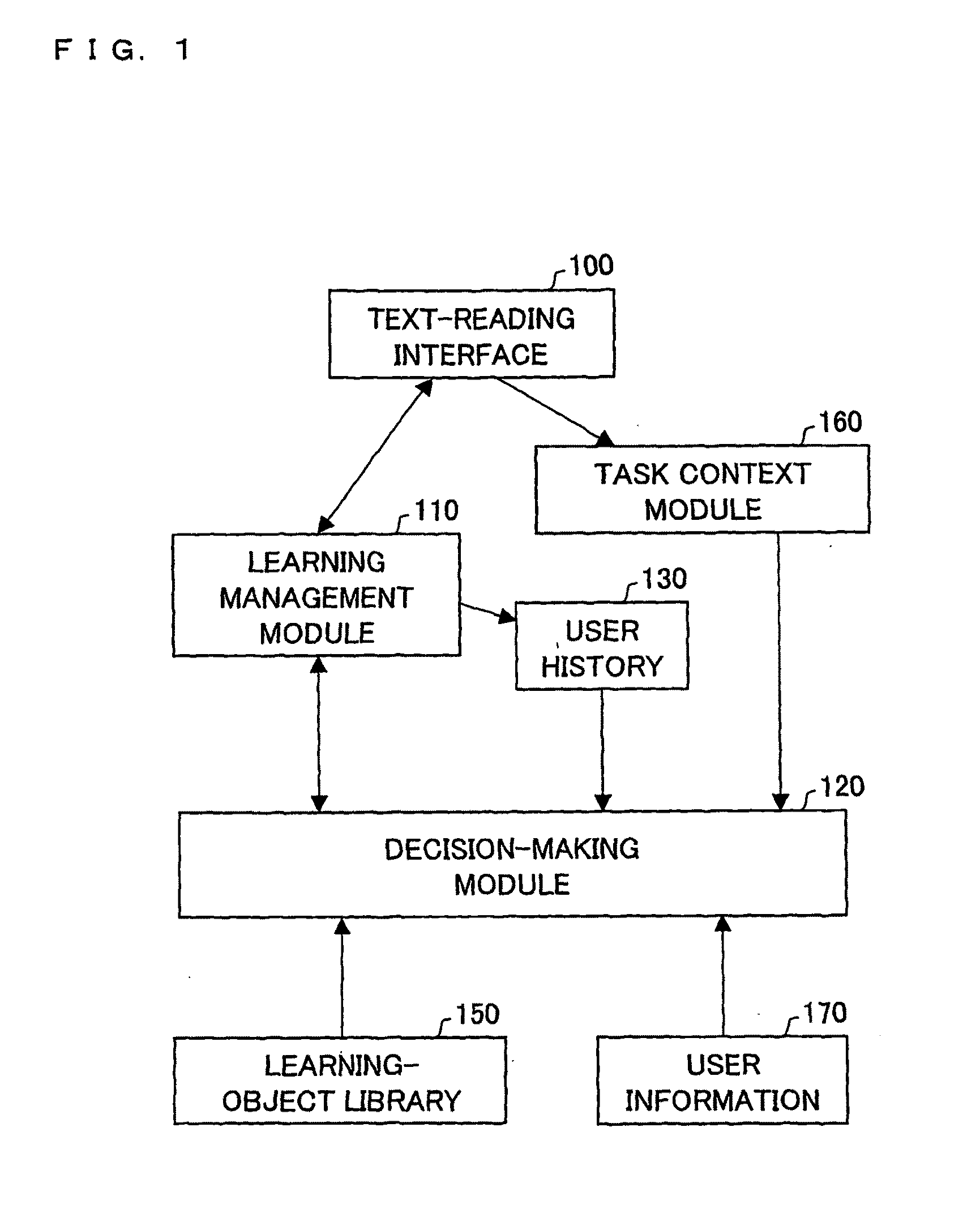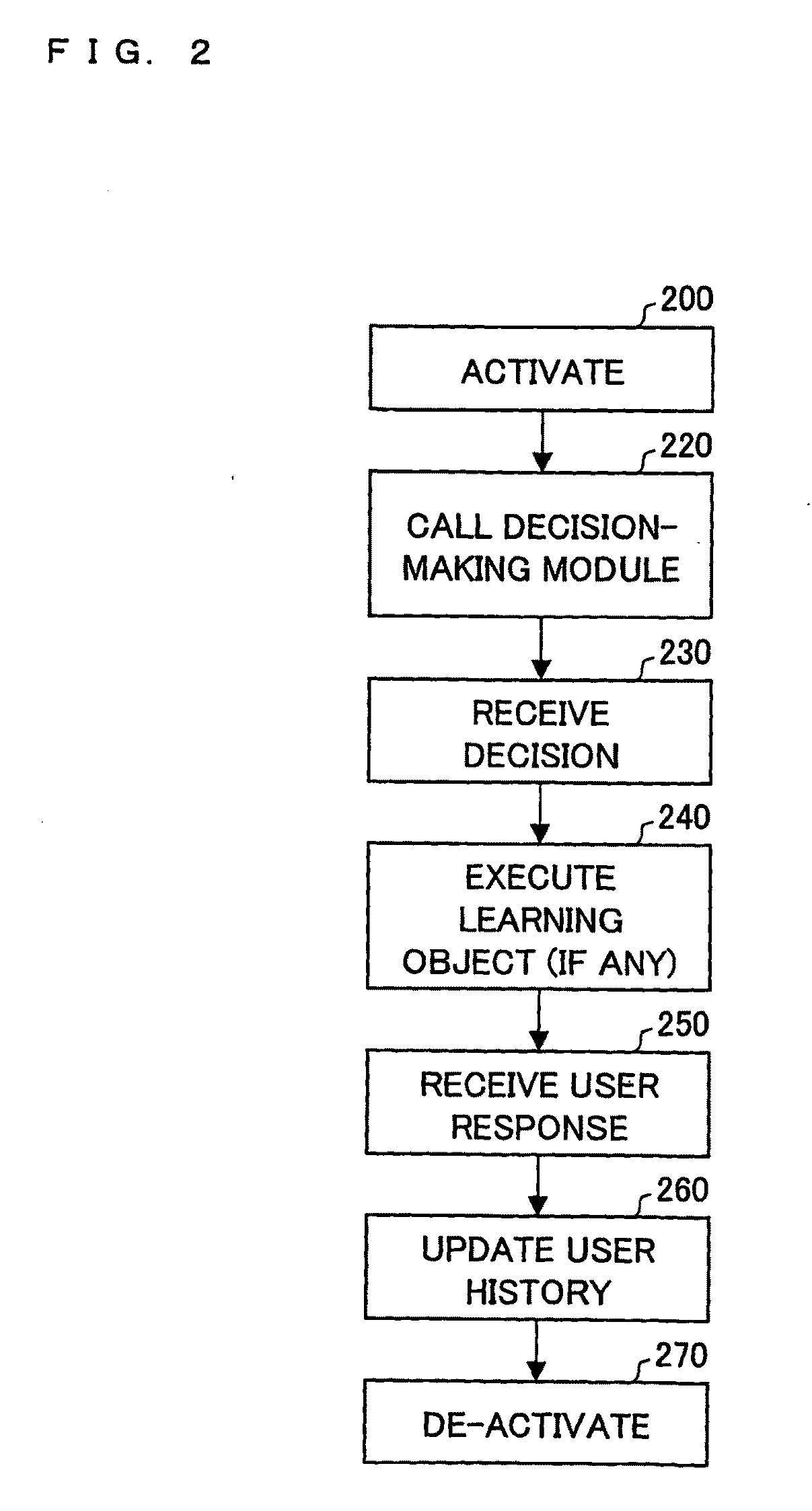Computer-implemented learning method and apparatus
a learning method and computer technology, applied in the field of computer-implemented learning methods and apparatuses, can solve the problems of affecting reading fluency, time-consuming and laborious to find the right information, and learning certain skills, subjects, or bodies of knowledge, etc., to achieve the effect of maintaining user motivation in learning
- Summary
- Abstract
- Description
- Claims
- Application Information
AI Technical Summary
Benefits of technology
Problems solved by technology
Method used
Image
Examples
Embodiment Construction
[0049]A preferred embodiment of the present invention provides an adaptive educational system for language learning, and in particular, vocabulary learning. The system runs while a user is performing a separate task such as reading a text or a book. The task is preferably an authentic task that the user would anyway be choosing independently to perform, one that is not designed for the sole purpose of supporting the adaptive learning method; the notion of an “authentic task” is discussed in further detail hereinbefore. The system can adapt to the user's growing knowledge about vocabulary by tracking the user's interaction with learning objects in the context of reading the text or book. Each time a user selects a word or phrase in the text or book, the system determines what learning object would best advance the user's knowledge of the word or phrase. The learning objects provide information, explanations, hints, short activities, or tutorials about word knowledge covering various ...
PUM
 Login to View More
Login to View More Abstract
Description
Claims
Application Information
 Login to View More
Login to View More - R&D
- Intellectual Property
- Life Sciences
- Materials
- Tech Scout
- Unparalleled Data Quality
- Higher Quality Content
- 60% Fewer Hallucinations
Browse by: Latest US Patents, China's latest patents, Technical Efficacy Thesaurus, Application Domain, Technology Topic, Popular Technical Reports.
© 2025 PatSnap. All rights reserved.Legal|Privacy policy|Modern Slavery Act Transparency Statement|Sitemap|About US| Contact US: help@patsnap.com



